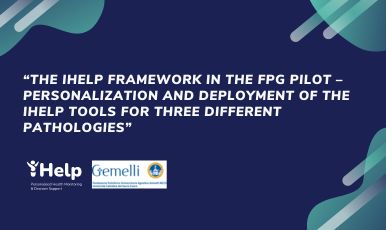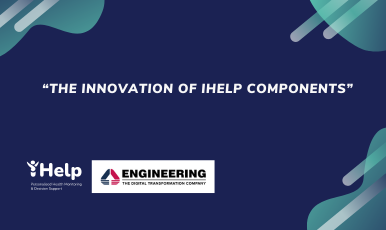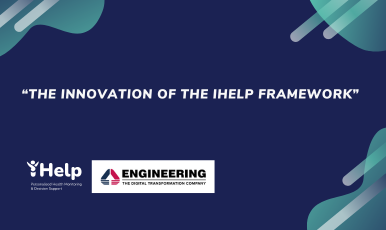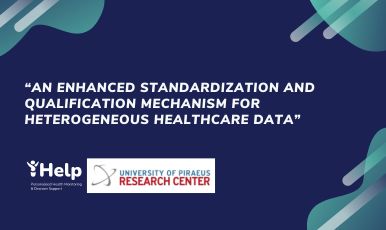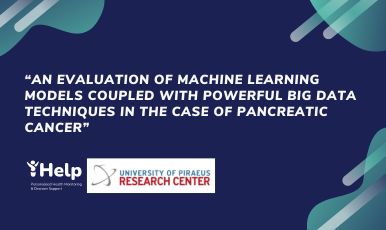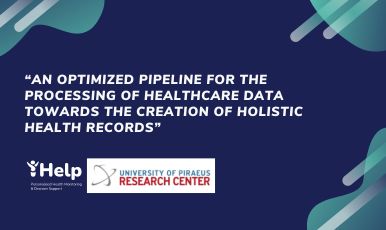The iHelp consortium has developed a novel personalized healthcare framework including tools for the collection, integration, visualization, and management of health-related data of patients with pancreatic cancer. Both patients and HCPs can make use of this framework and can experience a direct benefit. MDs have a single dashboard where to find both primary and secondary data, as well as reported events. But there are also indirect advantages: patients wearing smartwatches and answering questionnaires have a closer contact with HCPs and their participation in the study can improve the current knowledge and characterization of the pathology from a clinical and behavioral point of view.
Data collection can be performed through several techniques – such as data extraction from structured sources or text mining in the case of unstructured and textual sources – at least for clinical and primary data. Secondary data collection is performed in the prospective study and through a mobile app – Healthentia – that is downloaded and installed on the participant’s smartphone. Each patient can voluntarily answer questions and report other details on their daily symptoms or other parameters, such as food intake. Additionally, patients are asked to wear a smartwatch and to connect it to the app, to retrieve data on their heart rate, sleep duration, and physical activity.
Patients can be enrolled, monitored, and managed via a dedicated dashboard for HCPs, which is connected to the patients’ app developed by Innovation Sprint. Clinicians can check whether each participant is answering questionnaires and whether the wearable is correctly synced and connected. Questionnaires’ responses, as well as data deriving from the smartwatch, are also retrieved, and reported by the iHelp Decision Support System (DSS). This framework, along with its dependencies, can be used through a central node in case the hospital cannot host a dedicated server or, as in Fondazione Policlinico Universitario Agostino Gemelli IRCCS (FPG), it is deployed in a dedicated edge node or cluster. AI techniques to draw adaptive learning models for early risk predictions as well as personalized prevention and intervention measures, are made available to the consortium partners.
Other than the tools above mentioned, FPG has developed a dashboard for monitoring the number of patients who decided to take part in the study at each pilot site. Details on the overall number of patients that joined the project, as well as the distribution of the enrolments, give insights e.g. on the interest of end-users in using the iHelp tools.
At FPG, HCPs are currently using the Healthentia dashboard and are working with technical partners to finalize the deployment of all the dependencies of the iHelp framework. Clinicians can make use of the iHelp DSS to view patients’ data and check whether any answer or parameter is higher or lower than set thresholds, and can eventually decide to analyze a situation following the usual care guidelines and best practices – in the FPG pilot, no automatic suggestions or interventions are sent to patients. Such functionalities were discussed with the technical partners and several personalized indicators and indicators were added to the DSS that should be installed in the FPG premises. Additionally, the presence of a cluster of virtual machines hosted in the hospitals’ premises guarantees that patients’ clinical data do not leave the clinic and can be shown to HCPs via the locally installed dedicated tools.
Thanks to the flexibility and generalizability of the decision support suite developed in iHelp, FPG’s clinicians proposed to extend the use of the tools to other use cases and asked to include two additional pathologies to the study and the project: anal canal and prostate cancer. The chance of extending the iHelp study to three different pathologies made clear that the tools developed in the scope of the project can be easily adapted to other use cases and, other than being accepted by clinicians, can be effectively and actively used in clinical practice. Such endorsement and interest are also proof that the framework, the methodology, and the services developed in this project, as well as results, can be offered in the future to a wider audience of stakeholders, e.g. hospitals, clinics, specialists, or other care facilities and patients.

